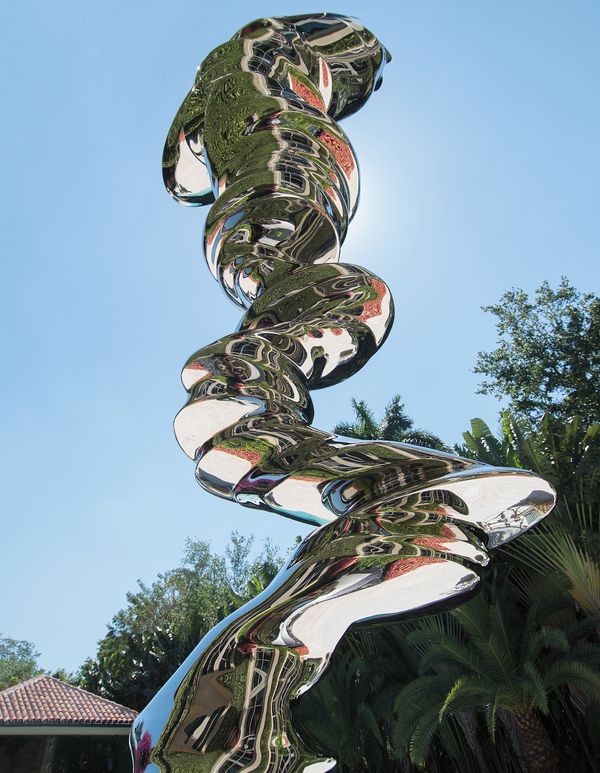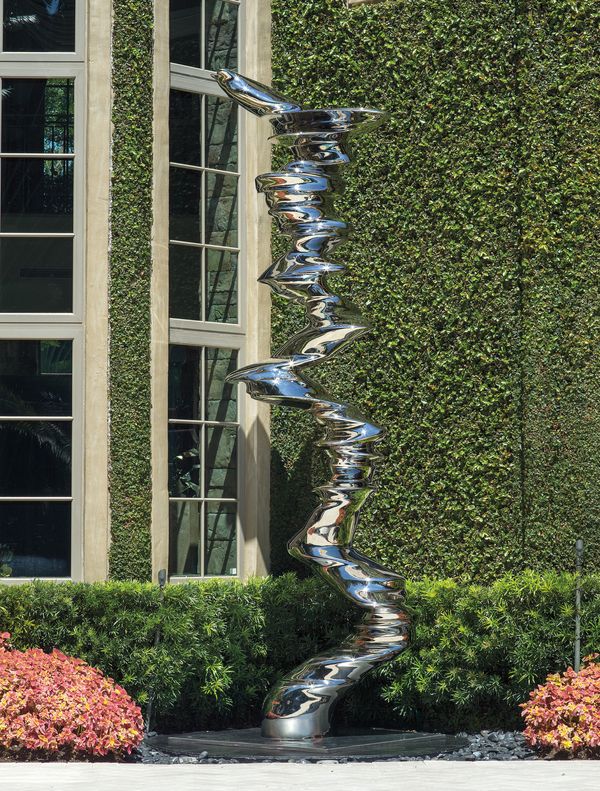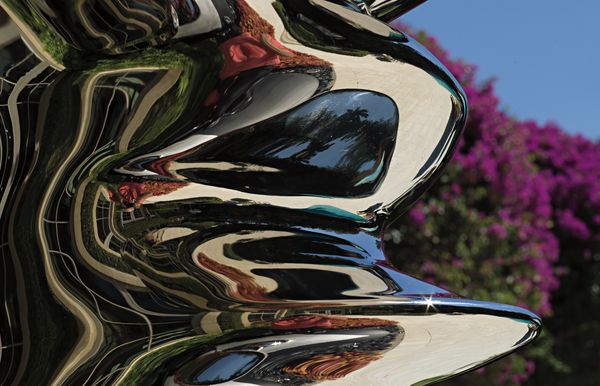Tony Cragg Elliptical Column, 2012
Most of the time I admit I do not know who is leading, me or the sculpture
—Tony Cragg
Since the 1970s, British sculptor Tony Cragg has redefined the notions surrounding the discipline of sculpture by challenging the medium's primary purpose within the broader trajectory of art history. From his beginnings working with found objects made of wood, stone and plastic, Cragg has continually acknowledged the apparent uselessness of his sculptures. They exist outside what he has called the "limited utilitarian censored reality," as Cragg thinks that no sculptor should be driven by what is useful and what is not.
Instead, as the artist espoused in an interview with Jon Wood in 2005, he or she should make forms that will exist and last forever outside of this reality.
While an industrial material, the steel takes on an almost liquefied trait that reads more like rippled water than a spherical mirror or dish.
As exemplified in this particular piece from our 20th Century & Contemporary Art Day Sale, it is a sculpture's purpose to create a series of dialogues: those between sculptor and material, sculpture and its surroundings, and viewer and sculpture. This first dialogue occurs during the production process. "Sculptures are often and at their best not just a result of an artist taking a material…but rather the result of a dialogue between the material and the artist," Cragg has said (Tony Cragg, "Articulated Column," in Tony Cragg familiae's exhibition catalogue, 2005).
A tower of stainless steel, Elliptical Column is composed of steel layers stacked atop one another along a bending central axis. From the ground, the layers twist and turn with the curved axial support, creating a varied surface which reflects and distorts the space surrounding it. Cragg's choice of a reflective, polished steel is a direct result of this aforementioned dialogue between sculptor and material. The steel informs the structure, and not vice versa, thus originating with the surface itself.
The reflections within the column's surface introduce the second dialogue—between the sculpture and the space it occupies. Commissioned for the piece's current Miami owner, Elliptical Column is not complete until it is installed, a key part of its composition being the images and changing light reflected on its smooth surface. While many of Cragg's contemporaries rely on the same reflective qualities for their own sculptures, the alternating recessions and projections of Cragg's globular, organic shapes create an even more varied surface that intentionally distorts its surroundings. While an industrial material, the steel takes on an almost liquefied trait that reads more like rippled water than a spherical mirror or dish.
As one is faced with their own reflections in Elliptical Column, there is the culmination of the viewing experience which ends with the conversations the work inspires. As the artist described of a sculpture's capabilities, "there's an idea that sculpture is something solid and static, and that it's a frozen moment of time…Sculpture is relatively solid, for the main part, but so is our everyday material reality…although the world looks very solid, actually it's incomplete—it's totally flowing the whole time. However, looking at sculpture somehow the world can suddenly fix up again."
When viewed from afar, it becomes clear that Cragg's stainless steel columns are not just abstract conglomerations of stacked shapes, but are instead intended to resemble a human profile. From the tip to the base of the sculpture, the viewer can follow its contour as if drawing their own facial profile, thus presenting an even deeper meaning.
As such, the sculpture has the capability to evoke something familiar beyond the reflections on its surface. This final dialogue thus concludes the multi-faceted purpose of Elliptical Column, a masterpiece possessing the ability to be not useful, but rather thought-provoking and evidently, reflective.



